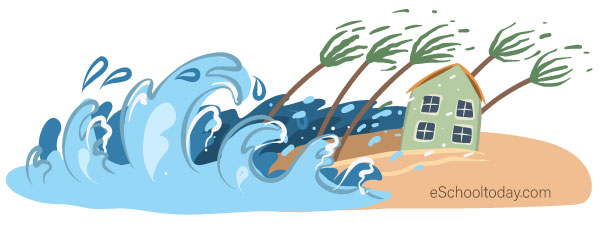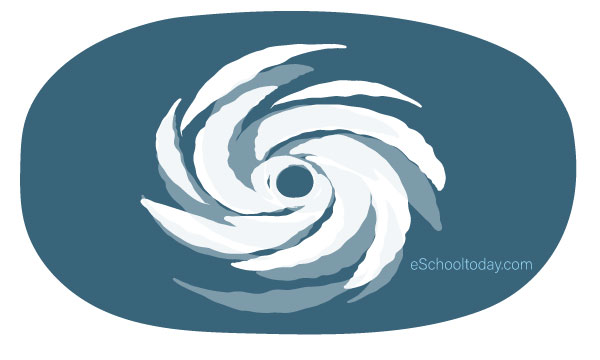- Hurricanes
Hurricanes and Tropical Storms
Introduction
A hurricane, like other natural disasters, is one that we pay attention to each time we see it on the news. It is because we have all seen the devastation that it can bring to us.

Many people have experienced it in one way or the other, and we have come to appreciate that hurricanes are not things that we can do much about in terms of their occurrence. It is natural. However, with modern monitoring systems and technology, we can be warned of impending hurricanes and take some reasonable level of caution to minimize the damage and the effect it can have on us.
Hurricanes are also called Typhoons or Cyclones in other parts of the world. Hurricanes are tropical cyclones forming over the Atlantic Ocean or the eastern Pacific Ocean.
What is a hurricane?

It is powerful, spiral weather that results from low-pressure systems. (low-pressure systems explained below) It is seen as a massive storm (powerful winds often with rains, thunderstorms, and lightning) that usually moves, covering a stretch of 500-600miles.
Low-Pressure System
This is an area (over land or water) where the atmospheric pressure is lower than that of the area surrounding it. Typically, there are winds around, and the air is a lot warmer, causing atmospheric lifting. Low-pressure systems result in cloud formation and bad weather. Hurricanes, typhoons, tropical storms, and tropical depressions are all examples of low-pressure systems.
The sustained winds within the hurricane move with speeds of over 74miles per hour (that is about the speed at which cars move on the highway), but the entire storm body moves at about 10-20 miles per hour. They often carry torrential rains and can bring about floods and landslides. Note that flooding along coastal regions is not only a result of the rains but more as a result of storm surges. Hurricanes can last for over a week.
With this image in mind, let us learn more about hurricanes form.
